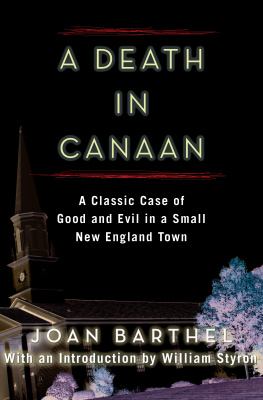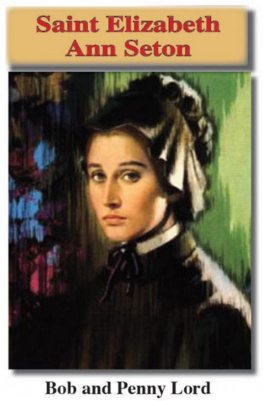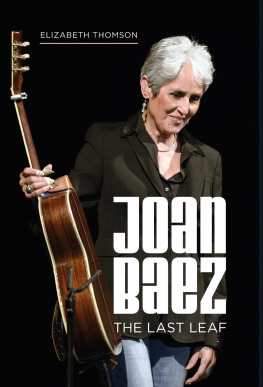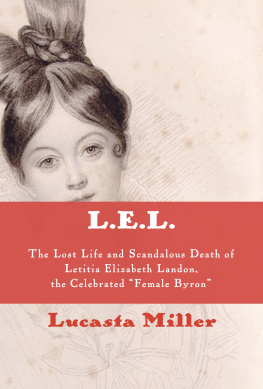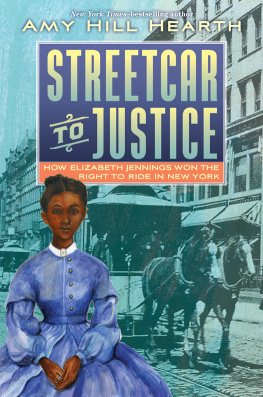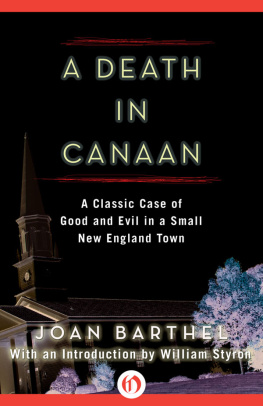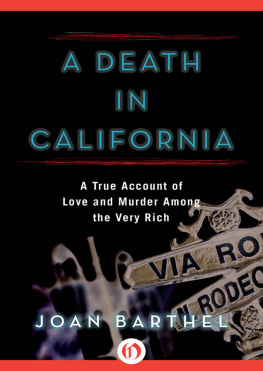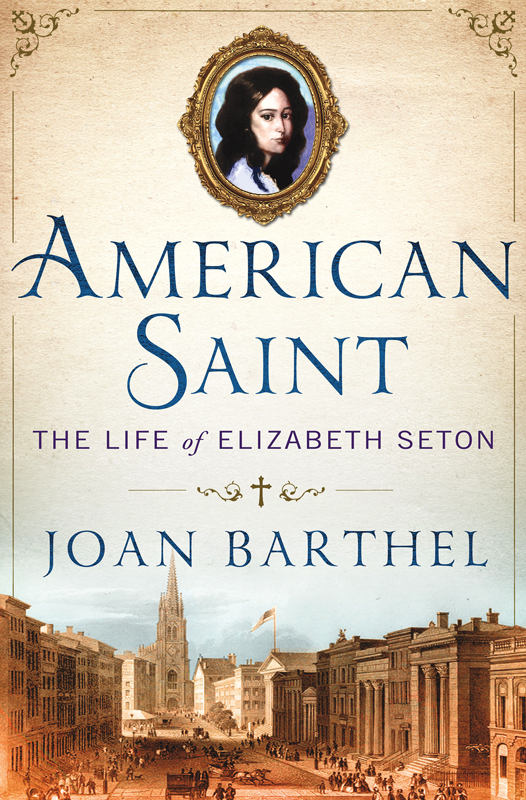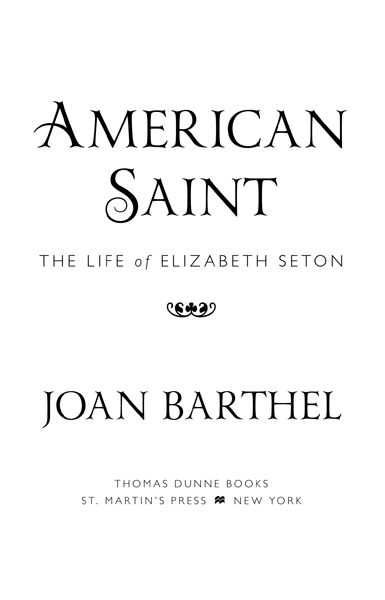
The author and publisher have provided this e-book to you for your personal use only. You may not make this e-book publicly available in any way. Copyright infringement is against the law. If you believe the copy of this e-book you are reading infringes on the authors copyright, please notify the publisher at: us.macmillanusa.com/piracy.
To Irene Fugazy
Sister of Charity of New York
and all women religious
the honor and the hope of the Church
CONTENTS
But who can search the Secret Soul and turn the rooted Sorrow
FROM A LETTER OF ELIZABETH SETON TO HER FATHER, DR. RICHARD BAYLEY, THURSDAY, FEBRUARY 20, 1800
FOREWORD
by Maya Angelou
Elizabeth Ann Seton lived many important lives and died before she was fifty. She lived a life as a wife, as a mother of five children, and as a widow. She became interested in the Catholic Church. It gave her a direct and fundamental entrance to God. She founded the first Catholic school in the United States and the first order of active American nuns. Setons life and achievements are proof that courage is the most important of all the virtues.
As both a Protestant and a Catholic, she was a religious woman who loved the Christian way and dared to support her conscience. Even today, many American nuns are rebuked by the Vatican for following the dictates of their conscience. I can only imagine how a principled Catholic woman of God survived more than two hundred years ago in a climate that had few precedents of female religious leadership.
American Saint: The Life of Elizabeth Seton is a map that allows us to follow the journey of this remarkable woman. We are able to examine each stop she made along the way, and we are amazed at her courage to get up and start her journey again, against visible and tangible odds.
The reader is engrossed and inspired by the telling of Elizabeth Ann Setons life. She took her family motto from the twelfth-century coat of arms, At whatever risk, yet go forward, as her command to live her life and her conscience for the glory of God and the benefit of human beings.
INTRODUCTION
Over the pope as expression of the binding claim of ecclesiastical authority, there stands ones own conscience, which must be obeyed before all else, even if necessary against the requirement of ecclesiastical authority.
Father Joseph Ratzinger wrote that at the time of the Second Vatican Council. Then, as Pope Benedict XVI, he authorized a crackdown on American nuns who are obeying their consciences above all else.
On April 18, 2012, the Vatican accused the Leadership Conference of Women Religious, which represents 80 percent of American nuns, of promoting radical feminist themes incompatible with the Catholic faith and corporate dissent against Church teachings, especially those on womens ordination, contraception, and homosexuality. Three bishops were appointed to revise the LCWRs statutes, to approve speakers at its assemblies, to review its plans and programs, and to launch a plan of reform that the Vatican called a doctrinal assessment and that on National Public Radio Maureen Fiedler, a Sister of Loretto, called a hostile takeover.
* * *
Most Americans have never met a Vatican official, but they have met nuns. In the wake of the harsh rebuke, vigils and rallies supporting the women were held in more than fifty cities across the country. Petitions were signed. Letters poured in. A resolution on their behalf was proposed in the U.S. House of Representatives. An editorial in The New York Times said, It would be a tragedy, far beyond the church, if their fine work and their courageous voices were constrained.
On June 18, 2012, because the Vatican document complained that nuns spend too much time on social justice issues and not enough on promoting Church doctrine, some nuns set out to illustrate their work with the poor and powerless. Nuns on the Bus traveled across nine states, stopping at homeless shelters, food pantries, schools, and health-care facilities run by nuns, protesting budget cuts in programs for the poor. At the end of the tour, in Washington, D.C., Dr. Sayyid Sayeed, the national interfaith director of the Islamic Society of North America, said, Nuns on the bus speak for not just Catholics, not for Christians only, not for Jews. They speak for all of us.
In August 2012, some nine hundred members of the LCWR gathered in St. Louis for their annual assembly. Be truthful, but gentle and absolutely fearless, Franciscan Sister Pat Farrell, the LCWR president, told the women, as for three days they discussed the Vatican document. Was this doctrinal process an expression of concern or an attempt to control? Does the institutional legitimacy of canonical recognition allow them the freedom to question with informed consciences?
On the last night of the assembly, the group gave its highest honor, the Outstanding Leadership Award, to Immaculate Heart of Mary Sister Sandra Schneiders, who has written about feminism and the church, citing the sins of patriarchy, notably sexism, clericalism and racism. The Vatican protested the award.
In April 2013, the new pope, Francis, reaffirmed the doctrinal assessment of the Leadership Council of Women Religious. In August, Archbishop Peter Sartain of Seattle, head of the three-bishop team in charge of the process, spoke at the groups annual assembly in Orlando. He did not specify how the investigation was proceeding, and he did not explain what the Vatican means by radical feminist themes. Pat McDermott, a Sister of Mercy, says that to have bishops review and oversee the organizations statutes, plans, and programs, and approve its speakers, is unacceptable.
The doctrinal assessment of the Leadership Conference of Women Religious will take five years, and no one knows what will happen at the end.
But Elizabeth Seton was there at the beginning.
ONE
Elizabeth woke in darkness, to the ringing of church bells.
A wind gusted through crevices in the brick wall; the room was clenched in cold. Waves crashed on the rocks below as white foam splashed high and hard against the little barred window, blotting out the moonlight.
Will and Anna were still asleep on the cold brick floor. There was no fire, but Elizabeths eyes burned from fatigue, from yesterdays stinging wind on the open boat that had brought them, an hour over pitching waves, to this despairing place.
Prison is the word Elizabeth used in the journal shed begun to keep on board the Shepherdess during the seven-week crossing from New York to Italy. Because yellow fever was rampant in New York, and the ship had come without medical clearancea Bill of Healththe Setons were not allowed on shore at Leghorn; instead, while a band on the quay played Hail Columbia in honor of the arriving Americans, they were rowed to quarantine in a dungeonlike building at the waters edge. A guard pointed their way with his bayonet: up twenty twisting stone steps to Room #6, naked walls, brick floor and a jug of water, where for forty days Elizabeth and her husband and their daughter would be confined.
She knew that officially it was a lazaretto, named for Lazarus, the leper in the New Testament whom everyone shunned for fear of contagion. But throughout her detailed journal, she determinedly called it a prison, where they were bolted in and barred with as much ceremony as any monster of mischief might bea single window double grated with iron thro which, if I should want anything, I am to call a centinel, with a fierce cocked hat and long riffle gun, that is that he may not receive the dreadful infection we are supposed to have brought with us from New York.


